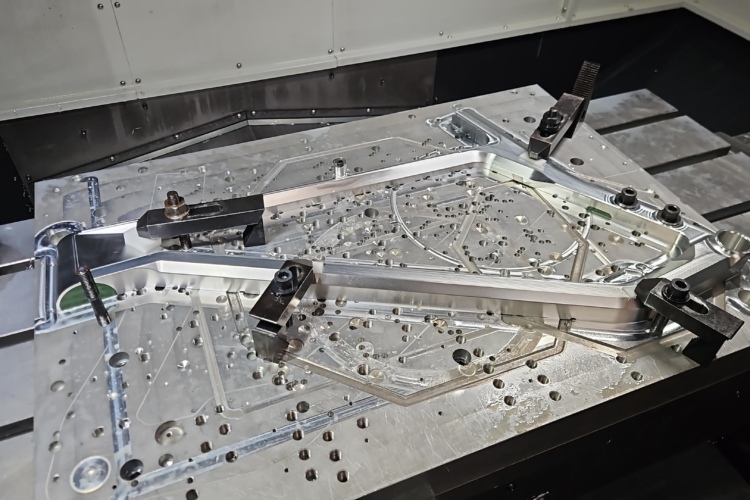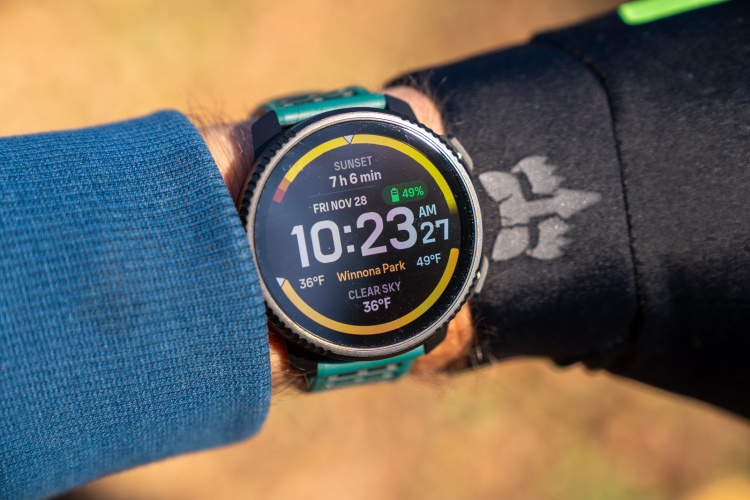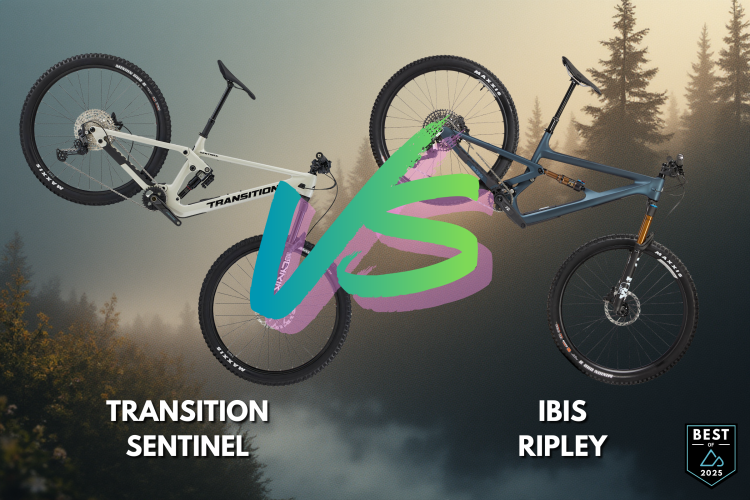
As mountain bikers, we love to argue… ah, I meant, politely share our opinions. Whether mechanical vs. electronic shifting, tire inserts, or, perhaps, the most controversial, our feelings on e-bikes, we’re not shy about letting our voices be heard.
So, it is time for another “this or that” conversation, exploring brake rotors and how they are mounted to the hub. Are you in the six-bolt camp or on the center lock side of things?
The lack of universal standards
From rear hub spacing to seatpost diameter, the lack of universal sizing and parts can be frustrating. Many of us have bought a new component for our bike only to find out that it doesn’t fit our frame.
This can certainly be true with new hubs and brake rotors. I’ve passed up good deals on wheelsets because they had a center lock hub; I wasn’t interested in buying new rotors. This wasn’t because I felt center lock rotors were inferior, but maybe less convenient.
“I think both platforms work pretty well when they are manufactured properly, installed correctly, and monitored by the end user,” Mark Wells, Director of Business Development at Project321 (P321), explained. “Even then, though, there is room for one issue or another to encroach on your good times, and I’ve seen them in my life as a mechanic and wheel builder.”

P321’s answer for the six-bolt vs center lock debate is their newly designed 6-Lock Hubs. The new hubs incorporate center lock splines and a six-bolt attachment standard rather than having to purchase an additional adapter.
But, if you didn’t have the option of P321’s new hub, does center lock or six-bolt reign superior? Wells and I compared notes on the issue.

Centerlock hubs and rotors
Disc brakes were first introduced to mountain bikes in the mid-90s, with the rotors attached via six bolts. Shimano introduced the center lock rotor in the early 2000s, first appearing on their XT and XTR lines. One purpose of the new rotor mount was to create an easier way to mount brake rotors. In this respect, Shimano’s centerlock idea was successful.
Pros of centerlock
When I use centerlock rotors, an obvious advantage is that they’re very easy and much quicker to install and remove. There is no fiddling with individual bolts — the rotor easily fits into the hub splines and is tightened with a single lock ring. Simple as that.
And Wells agreed. “It’s just one fastener. With the proper tool, rotors are quicker to install and uninstall. They are convenient, especially if you are traveling or servicing often.” It is also easier to ensure one fastener is uniformly tight rather than six.
This ease of on and off means I’m more likely to remove the rotors to prevent contamination if I do something like set up tubeless tires. Center lock also makes travel easier with a bike, where you should remove rotors to keep them from getting bent.
Wells also pointed out that if you travel with a center lock to six-bolt adapter, you can use any rotor you can get your hands on if something should happen, and you need to buy one.
Cons of center lock
For me, the most significant drawback of centerlock rotors is that they require a special tool. Wells pointed out that trailside maintenance is especially hard since no multitools come with a center lock tool.
“Center lock rotors can rock back and forth on the hub’s splines,” Wells told me. “There has to be a little clearance between parts to allow them to be installed, and that translates to a bit of a rock when you are on your brakes.”
Wells also said that while it hasn’t happened to him, he knows of riders who have had center lock rings work themselves loose. That said, I have had six-bolt rotor bolts also work themselves loose.
You also run the risk of cross-threading the center lock ring, which Wells saw a time or two during his time as a bike mechanic. He shared that both occasions resulted in a new hub/wheel build.

Six-bolt hubs and rotors
Six-bolt is a true classic and the standard for most mountain bikers. Rotors with six bolt holes are what most of us know, and are likely to stick with for the majority of our time mountain biking. And while there are some significant pros with the classic six-bolt setup, there are also some cons.
Pros of six-bolt
The biggest “pro” for me regarding six-bolt rotors is the rotor bolts are fastened with a T25 Torx wrench. Every quality multitool will have one, which makes at-home or trailside maintenance possible. Wells agreed, as trailside serviceability clearly leans toward six-bolt rotors.
Wells also pointed out that six-bolt rotors are typically lighter than equivalent center lock rotors.

Cons of six-bolt
If you have ever removed or replaced a six-bolt rotor, you know it takes some time. Plus, there is the chance of losing one of the bolts, which adds even more time spent trying to find it. Admittedly, much of the wheel-related maintenance I perform has at least a handful of minutes of me searching for a rotor bolt on my hands and knees.
“Six-bolts are bolting right into aluminum threads on your hubshell,” Wells said. “Cross thread or strip one or more, and you’re not going to be happy with yourself. If they come loose, and you don’t notice and ride them loose for any amount of time, it usually leads to the destruction of your brake mount tabs; you’re in for a new hub and rebuild.”
So, what is the verdict?
Honestly, center lock and six-bolt are well-matched. I like the on/off ease of center lock, but I don’t like purchasing one more specialized tool. Both can be cross-threaded. Both can come loose. Maybe six-bolt saves you some weight, but are those few grams really noticeable? And if there is going to be extra weight, having it at the center of the wheel is less of an issue.
In the end, I most value the ability to work on my bike trailside without carrying one more specialized tool, especially if that tool only serves one purpose. If I bend a rotor and need to remove it to get back to my car, I can do that with a six-bolt rotor. With a center lock rotor, I’ll be walking back.
But what about you? Do you prefer center lock or six-bolt? What pros and cons did I miss? Let me know below!











12 Comments
Jun 6, 2025
Jun 6, 2025
Jun 6, 2025
Jun 8, 2025
Jun 8, 2025
Jun 13, 2025
Jun 13, 2025
BTW, when the center lock rotor loosened up, I was able to hand tighten it every mile or so to finish my ride, so it didn't ruin my ride.
Jun 11, 2025
I would like to point out that the tool used for a centerlock lockring is also used for quite a few bottom bracket shells, as well as some e-bike motor lockrings. Additionally, there is usually a cassette lockring tool on the other end. So saying the tool "only serves one purpose" isn't really accurate...
Jun 8, 2025
Jul 3, 2025
Jun 6, 2025
Most of my bikes are 6 bolt,and I put blue Loctite on them - never had a lose bolt even after DH days
I think maintenance wins every day, and on the trail, if you did have a rotor bolt get loose, easy to tighten.
Though literally never seen it happen
Jun 6, 2025